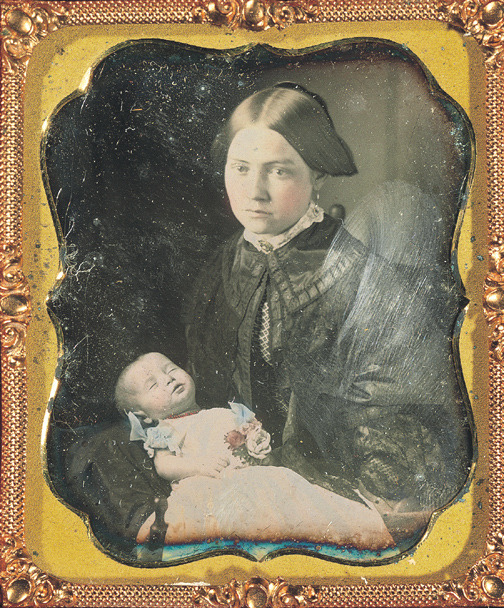Post-mortem portrait, woman holding baby
 Nineteenth-century photography's commercial success was due largely to the personal portraits. Beginning in the 1840s, Americans wanted their "likenesses" taken and flocked to photographic studios in major cities and small towns (or to itinerant practitioners traveling in more remote areas) for their individual and family portraits. A grimmer side of the photography market involved the taking of post-mortem portraits. Commonly used in cases of infant mortality or accidental death, the post-mortem portrait was usually the only image a family might ever have of the deceased. The finality of death was often diffused in these images by placing the subjects in positions suggesting sleep.
Nineteenth-century photography's commercial success was due largely to the personal portraits. Beginning in the 1840s, Americans wanted their "likenesses" taken and flocked to photographic studios in major cities and small towns (or to itinerant practitioners traveling in more remote areas) for their individual and family portraits. A grimmer side of the photography market involved the taking of post-mortem portraits. Commonly used in cases of infant mortality or accidental death, the post-mortem portrait was usually the only image a family might ever have of the deceased. The finality of death was often diffused in these images by placing the subjects in positions suggesting sleep.Physical Dimensions: 2.8 x 2.2 in.
URL: http://www.geh.org/taschen/htmlsrc1/m199414360001_ful.html#topofimage
Source: George Eastman House
Date: c. 1855



